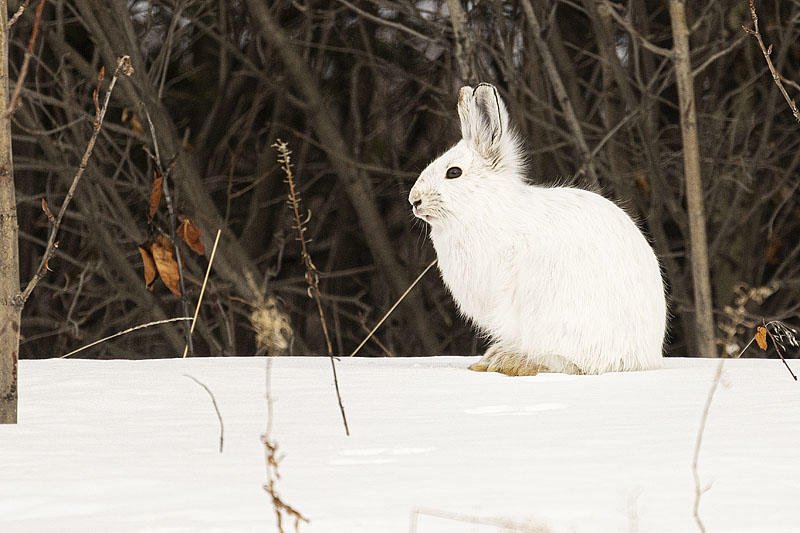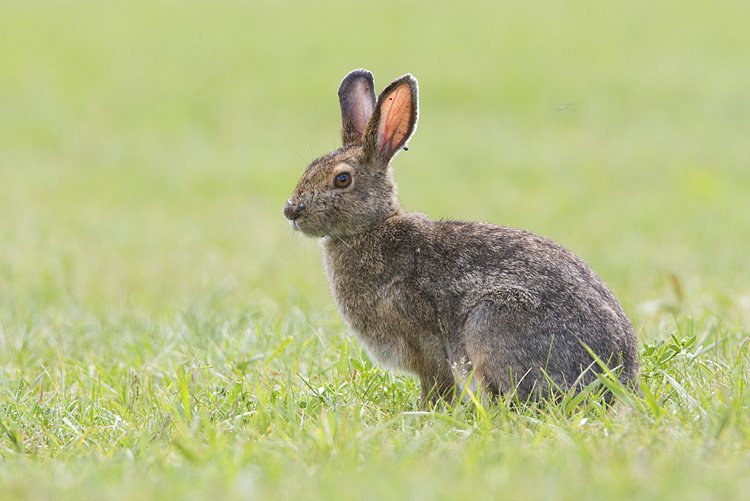Snowshoe Hare (Lepus americanus)
The snowshoe hare is a ubiquitous sight in Canadian forests. These abundant herbivores are important prey for a wide variety of animals and are critical to maintaining the diversity of boreal forest ecosystems.
Photo by Gerald Romanchuk
Why they Matter to Us
Snowshoe hares are critical to the food web in boreal forests and are often considered a keystone species. They have a strong impact on plant communities and are prey for many other animals.
Hares are an important small game animal and source of food for many First Nations.
How You Can Help
Support protected areas in the Edmonton region (such as EALT). You can donate or volunteer your time to help with conservation efforts.
If you see a baby hare, leave it be! Young hares do not stay in a nest and instead hide in separate locations during the day, so a seemingly abandoned baby is actually where it is supposed to be. If a hare appears to be injured, contact a wildlife rehabilitation centre like WildNorth.
How to Identify
Identify by Sight
Photo by Gerald Romanchuk
Snowshoe hares are named for their long, broad, furry feet. In the summer, their fur is rusty to grayish brown with a black dorsal line, white belly, and black ear tips. Their winter coats are completely white, except for black eyelids and black eartips.
Identify by Sign
Photo by Gerald Romanchuk
Snowshoe hares create a network of trampled down trails across their territory and maintain these trails diligently by clipping away fallen leaves and twigs. Snowshoe hare trails may be difficult to see in the summer, but are usually more visible in the winter.
The hind feet of snowshoe hares leave distinctive tracks: look for the impressions of their four long and widely spread toes. Like their trails, snowshoe hare tracks are usually easier to see in the winter.
Where to Find
Snowshoe hares inhabit forests across most of Canada. They can be found in both deciduous and coniferous forests and prefer dense understories with plenty of young trees and shrubs for cover. They are most commonly seen at night, dawn, or dusk.
Social Life
Photo by Lu Carbyn
Snowshoe hares are usually solitary, but individual hares may share overlapping home ranges. They have acute hearing, but are not very vocal. Most communication between hares involves thumping the ground with their hind feet.
Breeding season begins in March with courtship parades. Males and females will travel together while foraging, taking breaks to chase and leap over each other. Both males and females take multiple mates during breeding season.
The snowshoe hare’s gestation period is 36 days. Their litter size is typically 2-4 young, though may be up to 8. Females may have up to three litters a year. The young are born fully furred and hide in separate locations during daytime, usually coming together to nurse only once a day. Young hares are independent at 3 to 4 weeks old.
Food Chain
Snowshoe hares are largely herbivorous. During the summer, they consume grasses, flowers, leaves, and other plants. In the winter, they eat twigs, buds, and bark from trees. They may occasionally scavenge meat.
Snowshoe hares have many predators including foxes, coyotes, mink, owls, and goshawks. Canada lynx are especially reliant on snowshoe hares.
Fun Facts
Snowshoe hares can run up to 45 kilometers per hour and travel 3 meters in a single bound. They are also good swimmers.
Hares are generally silent, but can produce some vocalizations including snorts, squeals, and clicks.
Snowshoe hares may take dust baths to remove external parasites.
Snowshoe hares have a ten year population cycle. At its peak, their population density may reach 500 to 600 hares per square kilometer.




